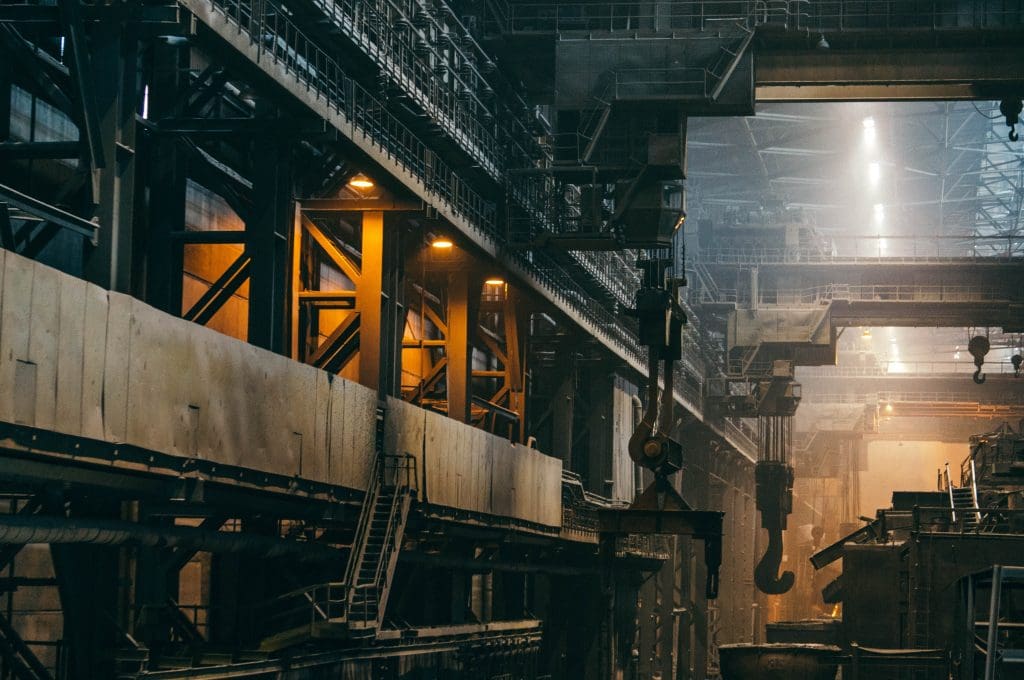As cutting-edge technology vaults the global economy into the Fourth Industrial Revolution, the processes we use to turn raw materials into everyday products are still astoundingly reliant on the same dirty-burning fossil fuels that our grandparents used a century ago.
Manufacturing still relies on extracting millions of tons of raw material from the ground every day and refining it into cement, steel, polymer and countless other finished products by burning carbon fuel to super-high temperatures and emitting tons of planet-warming greenhouse gases (GHG). According to a recent IEA Tracking Industry report, direct industrial GHG emissions rose to 24 percent of global emissions, and unless something is done to decarbonize, there will be no chance of addressing the climate change challenge.
So, what can financial institutions do? IFC, for one, is sensitive to the critical role that manufacturers play in improving living standards, providing jobs and bolstering economic growth around the world and has developed a comprehensive strategy that addresses every link of the value chain, encouraging countries to produce a greater diversity of products using more sustainable processes.
The strategy emphasizes low-carbon growth through the selection of the best available technology and the use of cleaner fuels and renewable power. It encourages manufacturers to reduce their use of natural resources by applying circular economy principles, as well as by conducting a systematic greening of their supply chains and selectively substituting imports to reduce transport-related emissions.
The World Bank Group, including IFC, has established a major new set of climate targets (PDF) for 2021-2025, doubling its current five-year investments to around $200 billion in support for countries to take ambitious climate action.
Innovative solutions
To further encourage such investments, IFC set an internal price on carbon at $40–80/metric ton of carbon dioxide equivalent in 2020, rising to $50–100 in 2030 and continuing in a similar trajectory beyond. Making extensive use of financial and advisory support services to help investee companies recognize the reputational value of sustainability and good global citizenship, IFC also uses innovative tools such as green bonds, green loans and blended finance to marshal decarbonization investments.
These efforts are already influencing IFC’s investments. In Nigeria, where a high percentage of natural gas is flared in the country’s oil fields, for example, IFC is helping to monetize the wasted gas by investing in fertilizer plants that use the flared gas to produce nitrogen fertilizers. The production of fertilizers results in a significant amount of carbon dioxide emissions, but by using gas that otherwise would be flared, the overall GHG emissions are significantly reduced.
Guided by a set of best practices in the cement sector, IFC has invested in various waste heat recovery projects in middle-income countries such as Turkey and India. IFC also has financed several projects that use alternate fuels and raw materials (PDF) to manufacture cement.
In the steel sector, IFC is promoting investments in projects that will procure locally collected scrap for the operation of energy-efficient greenfield induction furnace or Electric Arc Furnace-based mini-mill scrap-based steel plants. Recent investments in the glass industry emphasize the use of cullet or recycled glass and the production of energy-efficient glass products for use in cars and buildings.
The $2.5 trillion fashion industry is responsible for around 10 percent of global GHG emissions. Several global fashion brands are moving toward sustainable practices. Levi Strauss & Co has been at the forefront of this trend. Levi Strauss and IFC are working with 42 designated Levi Strauss suppliers and mills to reduce GHG emissions by helping suppliers identify and implement appropriate renewable energy and water-saving interventions across 10 countries.
While these initiatives are noteworthy, much more needs to be done. There are two major challenges to reducing GHG emissions in industry: high-temperature heat requirements currently can be met only by using fossil fuels; and the reduction of non-fuel or process-related GHG emissions from ammonia, cement, ethylene and steel sectors that comprise almost 45 percent of overall emissions. These non-fuel emissions can be reduced only through major changes to raw materials and processes.
Meeting these challenges will require accelerated effort towards circular economy innovations to refashion products and processes, changes in human behavior, deeper energy efficiency improvements, electrification using renewable energy, use of hydrogen and biomass as feedstock or fuel, and carbon capture.
According to OECD estimates (PDF), a low emission pathway will require an additional 10 percent in overall infrastructure investment needs over the next 15 years. The good news is that the additional costs could be offset over time with fuel savings.
We are entering a period of unprecedented climate change disruptions that will redefine our comfort zones, challenge our perceptions and change the way we consume and produce. The very health of the planet hangs in the balance and increasing decarbonization of industry guided by sound investments is a critical part of the solution.
Source: GreenBiz









